BLOG
Suspension services
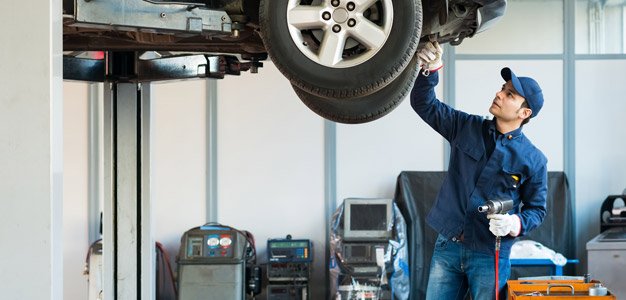
Balance, stability and smoothness – they’re what ensure a comfortable ride for you and your passengers, and your car’s steering and suspension are what make this possible. Steering and suspension are responsible for keeping your wheels firmly intact with the ground, and a major player in keeping your car from veering to one side or the road.
If your vehicle’s steering and suspension isn’t working properly, you’re in for a bumpy ride – literally. At the first sign of trouble, bring your car in for steering and suspension services. Symptoms of a faltering steering and suspension system include:
- Noise when driving over bumps
- Vehicle bouncing
- Hard turning
- Uneven tire wear
- Wandering wheels
The first step in solving your steering and suspension problem is diagnosing your vehicle. During a Complete Vehicle Inspection, our tire and auto service professionals will inspect all major systems in your car, including the steering and suspension. We’ll assess the state of your car’s:
- Front End
- Rear End
- Shocks
- Coil Springs
- Struts
- Bushings
- CV Joints and Axles
- Chassis Parts
- Wheel Bearings
- Differential
- Power Steering
- Power Steering Fluid
Alignment
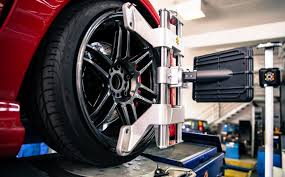
Balance, stability and smoothness – they’re what ensure a comfortable ride for you and your passengers, and your car’s steering and suspension are what make this possible. Steering and suspension are responsible for keeping your wheels firmly intact with the ground, and a major player in keeping your car from veering to one side or the road.
If your vehicle’s steering and suspension isn’t working properly, you’re in for a bumpy ride – literally. At the first sign of trouble, bring your car in for steering and suspension services. Symptoms of a faltering steering and suspension system include:
- Noise when driving over bumps
- Vehicle bouncing
- Hard turning
- Uneven tire wear
- Wandering wheels
The first step in solving your steering and suspension problem is diagnosing your vehicle. During a Complete Vehicle Inspection, our tire and auto service professionals will inspect all major systems in your car, including the steering and suspension. We’ll assess the state of your car’s:
- Front End
- Rear End
- Shocks
- Coil Springs
- Struts
- Bushings
- CV Joints and Axles
- Chassis Parts
- Wheel Bearings
- Differential
- Power Steering
- Power Steering Fluid
What is wheel alignment?
Wheel alignment actually refers to your vehicle’s suspension—a series of springs and highly calibrated parts that work together to keep your tires sitting at the correct angles, known as the camber, caster, and toe. During an alignment, the angles of the tires are adjusted so that they come into contact with the road in just the right way.
What are some of the BIG benefits?
More even treadwear, better gas mileage, smoother steering…the list goes on and on! Regular alignment checks are significantly more affordable than replacing tires and other car parts suffering from uneven, premature wear. In addition to cost savings, you can also expect the following benefits with proper wheel alignment:
- Fewer auto repairs
- Smoother driving experience
- Better vehicle safety
- Longer tire life span
- Increased fuel efficiency
If you think about it, your vehicle’s suspension is kind of like your body’s bones and muscles. When your bones are strong and your muscles are flexible, your body moves how you want (and expect) it to move. Same goes for your wheel alignment.
How does alignment impact the overall health of my car?
When your wheels are properly aligned, your car handles better and drives the way it was intended to. When your alignment is off, your vehicle may not move in the way or direction you expect, and that’s a safety hazard! Misaligned wheels can threaten the safety of your ride by causing it to pull to one side and lessening maneuverability. Proper alignment ensures optimal driveability, balanced tire wear, and above all—your safety on the road.
How often should I check my alignment?
Many manufacturers recommend an alignment check every 10,000 miles (or less if you frequently drive on rough roads). Check your owner’s manual to make sure you follow the guidelines, especially if your car is under warranty. There are also a few signs to watch out for that signal it’s time for a wheel alignment, like uneven tread wear on your tires or trouble keeping your steering wheel straight and free of drift.
Battery
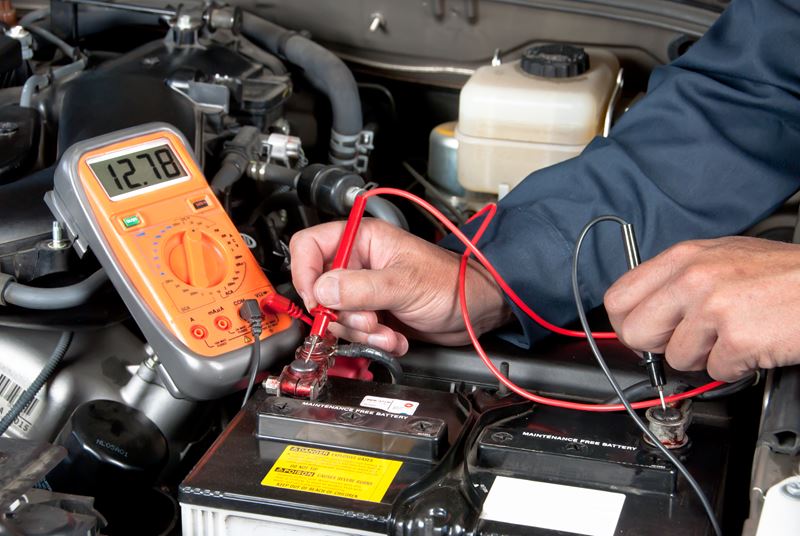
“If I only knew sooner.” Yep, we’ve all been there before. Fortunately, there are a few symptoms that may indicate your battery needs attention. Before it’s too late.
- Slow engine crank:
- Check engine light:
- Low battery fluid level:
- The swelling, bloating battery case:
- Battery leak:
- Old age:
When you attempt to start the vehicle, the cranking of the engine is sluggish and takes longer than normal to start.
The check engine light sometimes appears when your battery power is weak.
Car batteries typically have a part of the casing that’s translucent so you can always keep an eye on your battery’s fluid level. If the fluid level is below the lead plates : (energy conductor:) inside, it’s time to have the battery and charging system tested.
If your battery casing looks like this you can blame excessive heat for causing your battery case to swell, decreasing your battery life.
Leaking also causes the corrosion around the posts : (where the + and – cable connections are located.: ) The gunk may need to be removed; otherwise, your car may not start.
Your battery can last well beyond three years but, at the very least, have its current condition inspected on a yearly basis when it reaches the three year mark.
Top Questions and Answers.
How could a battery drain overnight?
Batteries can do a lot of things while we’re not looking. The most common way a battery will drain overnight is by leaving a light on or a power adapter plugged in, zapping all your battery power while you’re fast asleep. Your battery can also drain overnight if there are faulty electrical components or wiring. If this might be the case, let us check it out so we can resolve the problem and get you rolling again.
What factors will affect the life of my car battery?
So, you want to know if your battery will last three years or, better yet, five years, eh? Well, that all depends on your driving habits, plus the year-round climate in your area.
- Short Trips. Shorter battery life. If you take many short trips (less than 20 minutes), your battery won’t have enough time to fully recharge, shortening its overall life expectancy.
- Extreme temperatures kill batteries. The dog days of summer take the biggest toll on your battery. Scorching temperatures — and even freezing temperatures — can shorten battery life. A lot of times, waiting until the deep freeze of winter to replace your battery is often too late. The cold weather could pretty much make that heat worn battery dead on arrival.
- Find your region. Discover the average battery life.
Quick Steps:
Use our Virtual Battery Tester and discover how long a car battery will typically last in your specific make and model vehicle.
Price out your next Interstate Battery. Discover the exact price and the Interstate Battery designed for your vehicle.
What are the warning signs that my alternator is failing?
“If I only knew sooner”. We’ve all been there before. Fortunately, there are various indications and symptoms that your battery may need replacement:
- Slow engine crank: When you attempt to start the vehicle, the cranking of the engine is sluggish and takes longer than normal to start. You’d best describe it as the “rur rur rur” starting noise sound.
- Check engine light: The check engine light sometimes appears when your battery power is weak. Strange system indicator lights – such as check engine and low coolant lights – could mean there’s a problem with your battery. (It could also just mean you need more coolant).
- Low battery fluid level: Car batteries typically have a part of the casing that’s translucent so you can always keep an eye on your battery’s fluid level. You can also inspect it by removing the red and black caps if they are not sealed (most modern car batteries now permanently seal these parts).
- The swelling, bloating battery case: If your battery casing looks like it ate a very large meal, this could indicate a battery gone bad. You can blame excessive heat for causing your battery case to swell, decreasing your battery life.
- Eww, there’s a stinky, rotten egg smell: You may notice a pungent, rotten egg smell (sulfur odor:) around the battery. The cause: Battery leaks. Leaking also causes the corrosion around the posts (where the (+) and (–) cable connections are located.) The gunk may need to be removed; otherwise, your car may not start.
- Three years + battery age is considered an old timer: Your battery can last well beyond three years but, at the very least, have its current condition inspected on a yearly basis when it reaches the three year mark. Battery life cycles range from three-to-five years depending on the battery. However, driving habits, weather and frequent short trips (under 20 minutes) can drastically shorten the actual life of your car battery.
Bottom line: If the fluid level is below the lead plates (energy conductor) inside, it’s time to have the battery and charging system tested. When fluid levels drop, it’s typically caused by overcharging (heat).
Be safe. Have your battery tested.
Save with special deals on new battery installations.
Find the right Interstate Battery for your specific vehicle, at the right price — right now. Get a free online Battery Price Quote
Help your battery life with the little things.
Imagine waking up to a dead car battery. It isn’t fun. At all. But because batteries can do stuff when we’re not looking, we need to help them go the distance. That means turning off all interior and exterior lights when exiting your ride. It’s important to unplug power adapters, too.
Tyre

What are the basics?
There is no way to tell exactly how long a tire lasts. The lifespan and mileage of a tire depends of a combination of factors: its design, the driver’s habits, the climate, the road conditions and the care that's put into the tires.
A few milestones and tips:
- Keep five years in mind
- Ten years is a maximum
- Proper care expands a tire’s lifespan
After five years or more in use, your tires should be thoroughly inspected at least once per year by a professional.
If the tires haven't been replaced 10 years after their date of manufacture, as a precaution, We recommends replacing them with new tires. Even if they appear to be in usable condition and have not worn down to the tread wear indicator.
This applies to spare tires as well.
You can increase your tire's longevity by maintaining the correct air pressure, performing regular tire rotations and vehicle maintenance.
For original equipment: follow the vehicle manufacturer’s tire replacement recommendations.
What damages tires?
Physical factors:
- Age
- Wear and damage
Road conditions:
- Potholes, obstacles,curbs ,sharp objects, speed bumps
Climate:
- Extreme temperatures
- Rain, snow and ice
- Oil, grease and other chemicals
- Strong sunlight and ozone
Neglecting basic tire maintenance:
- Air pressure
- Not routinely checking for wear or damage
- Alignment and rotation
- Neglecting to get a professional tire inspection in the event a tire has been impacted or sustained damage
- Not balancing tires after they are installed
- Improper tire storage
- Use of sealants that have not been approved
Improper usage:
- Using summer tires on snow and ice
- Mixing tire types
- Using tires on damaged wheels
- Using wheel and rim sizes that are not compatible
- Fitting tires that do not have a speed capability and load index at least equal to or higher than those originally specified by the vehicle manufacturer
- Reinflating a tire that has been run flat or seriously under inflated
- Using a spare tire of a different size at speeds in excess of 50 mph
Is my tire worn out?
We recommend to replace your tire if:
The tread is worn beyond the recommended tread depth levels
1. Inspect your tire regularly and look for:
- Uneven tread wear
- Shallow tread
- Troublemakers (rocks, nails, etc.)
- Damaged areas
- Damaged valve caps
2. Pay attention to the “feel” of your tires as you drive.
- A rough ride may indicate tire damage or excessive wear.
- If you notice vibrations or other disturbances while driving, immediately reduce speed, drive with caution until you can safely pull off the road and stop, and inspect your tires.
- If a tire is damaged, deflate it and replace it with your spare. If you do not see any tire damage and cannot identify the source of the vibration, take the vehicle to a tire dealer for a thorough inspection.
3. See a professional
- If you see something you’re not sure about during your inspection, have it examined by your tire dealer.
How do I inspect my tire?
1. Check your air pressure
- It’s quick and can prevent many problems
- Do it once a month
2. Check the tread wear with one of the three methods:
- With a tread depth gauge
- With the tread wear indicators
- With the penny test
One easy way to check for wear is by using the penny test. All you have to do is grab your spare change and follow 3 easy steps.
- Take a penny and hold Abe's body between your thumb and forefinger.
- Select a point on your tire where tread appears the lowest and place Lincoln's head into one of the grooves.
- If any part of Abe Lincoln's head is covered by the tread, you're driving with the legal and safe amount of tread. If your tread gets below that (approximately 2/32 of an inch), your car's ability to grip the road in adverse conditions is greatly reduced.
3. Inspect your tires for wear and damage problems
We’ve created an easy-to-use online tool to help you identify issues and learn how to fix them.
Next steps :
Any visible perforation, cut or deformation must be checked thoroughly by a tire professional.
Only a tire professional can tell you if your tire can be repaired or has to be changed.
Oil Change
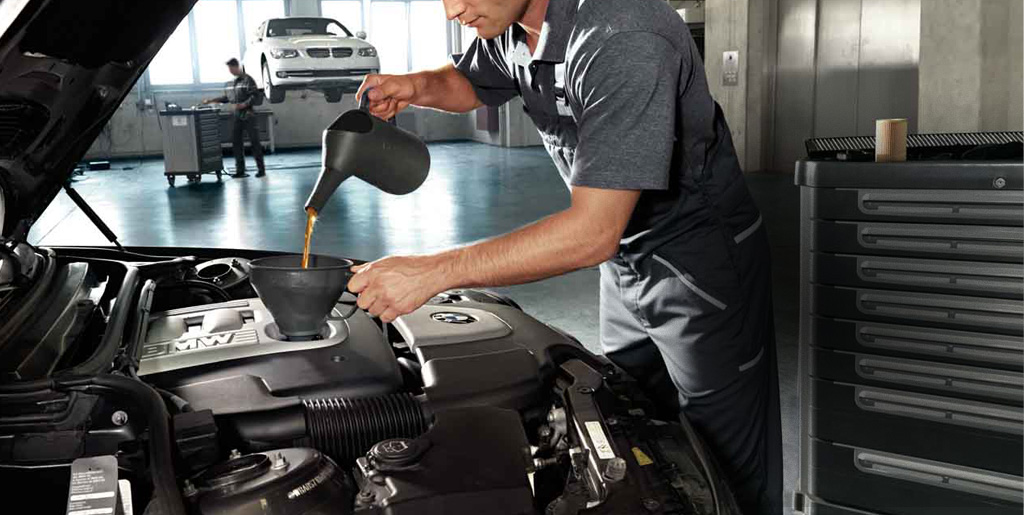
What does a fully-Service OIL change include?
Not all oil change places are created equally. During your oil change, an expert technician will:
- Change your vehicle’s motor oil using the best brands of full synthetic oil, synthetic blend oil, or high mileage motor oil, depending on your vehicle, climate, and driving style
- Replace and recycle your car’s used oil and oil filter
- Inspect your car’s cabin filter, air filter, and other filters
- Perform a comprehensive courtesy inspection of the entire vehicle, like checking vehicle lights, car battery life, etc
- Top-off other important fluids
Alloy Wheels
What is an alloy wheel?
The term alloy wheels is usually given to wheels 'cast' from a mixture of aluminum
instead of steel, making the tyres light weight even though they’re usually larger in
size than the factory fitted steel wheels.
They aluminum helps dissipating heat and small amounts of more rigid metals whose
presence in the 'mix' provides rigidity and helps prevent cracks propagating.
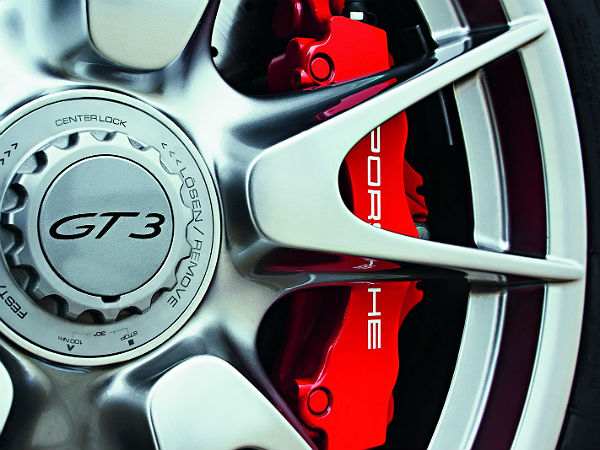
What are the advantages of alloy wheels?
- Aesthetic value ( beauty , elegance and a sporty look )
- A variety of designs to choose according to ones taste.
- Light weight ( hence low unsprung weight ) resulting in lower inertia being imparted to the springs while riding over a bump.
- Lighter rotational mass improves acceleration , braking and fuel efficiency .
- Better road holding ( tyre remains in contact with the running surface longer ).
- Better braking ( wheel hop under traction is reduced ).
- Longer tyre life because of better heat dissipation (alloy wheels are better conductor of heat) . Tyres fitted on alloy wheels are on an average 10% cooler than the normal rims particularly at high speeds . Cooler tyres wear out more slowly.
- Reduced and even tyre wear because alloy wheel is invariable and perfectly true.
- No corrosion or rust since special aluminium alloys are used .
- Perfectly round and balanced hence no wobbling even at high speed.
- Completely air tight hence perfectly suitable for modern tubeless tyres.
- Enhanced cooling of disks and drums .
- Less prone to bending and deformations , hence improved balance retention .
- Superior rigidity improves cornering , lateral stability , better steering & handling .

What does Offset mean ?
Offset is the distance between the hub mounting face at the back of the wheel and the
wheel's centreline. Offset is usually stamped or engraved into the wheel and is measured
in millimetres of 'ET' [ET is the short form of the German word 'Einpresstiefe' which
literally translates as 'insertion depth']
Positive Offset wheels have their mounting face toward the front face
of the wheel. Most front wheel drive vehicles have positive ET wheels.
Zero offset wheels have their mounting face even with the centerline of
the wheel and are by definition "ET 0".
Negative Offset wheels have their mounting face toward the rear of the
wheel - powerful rear-wheel drive cars often have wheels with negative offset.

What does PCD mean?
PCD stands for 'pitch circle diameter' and is the diameter of a circle drawn through the centre of your wheel's bolt holes. P.C.D. is measured in millimeters and also indicates the number of studs or bolts the wheel will have.
Are special tyres required for installing alloy wheels?
There is no requirement of special tyres to install alloy wheels. Standard tyres given by the car manufacturer are perfectly compatible with the wheels.
Is balancing and alignment necessary while installing alloy wheels?
Just like any other steel wheels, balancing is necessary while installing alloy wheels to strike a perfect balance between the tyres and wheels. This is necessary to avoid wobbling and uneven wear and tear.
Do you get common alloy wheels, which fit on all the cars?
No every car has different bolt pattern, but there are vehicles, which share a common bolt pattern for which common wheels are applicable and available.
What does Plus-Sizing or Up-Stepping mean?
Plus-Sizing or Up-Stepping are two terms given to the practice of increasing the
diameter of your wheels whilst simultaneously reducing the profile of your tyres to keep
the overall rolling radius the same. Plus sizing helps improve the handling of the car.
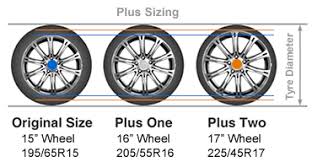
What are alloy wheels locking nuts and locking bolts?
A set of locking wheel nuts or locking wheel bolts functions like a regular nut or bolt, but requires a special key tool for installation and removal. Locking wheel nuts & wheel bolts are designed to only be loosened when the appropriate key is used to turn them and therefore offer great protection from wheel and tyre theft. The simple installation of locking nuts or locking bolts makes them an easy way to secure your alloy wheels.
Care and maintenance of alloy wheels
In order to maintain the finish on your alloy wheels it is recommended that you use a mild soap with water based solution and clean with a soft un-abrasive cloth. Please do not use any kind of chemicals, household cleaners or detergents. Avoid using Aluminum polish on chrome, painted or clear coated wheels.




 DELIVERY AND INSTALLATION
DELIVERY AND INSTALLATION